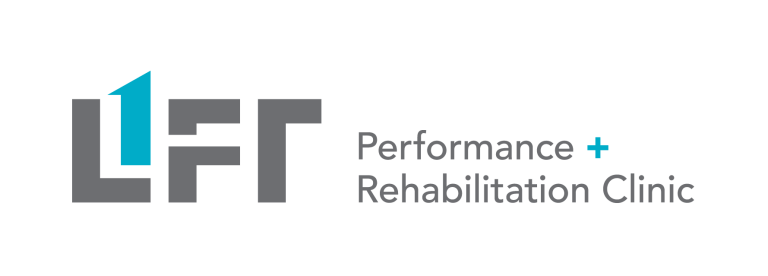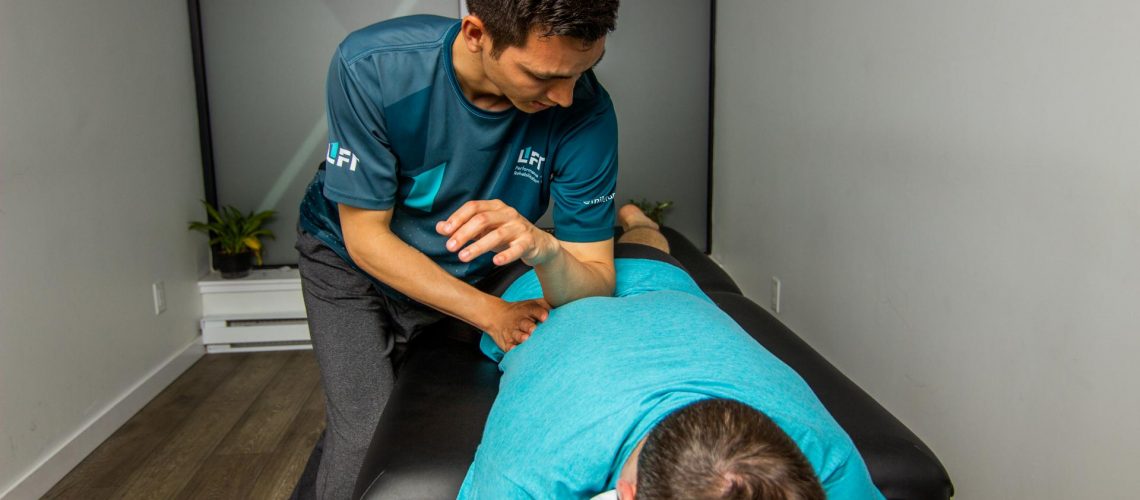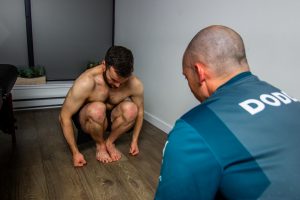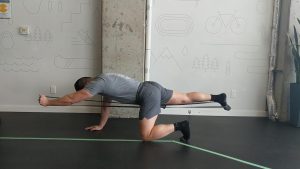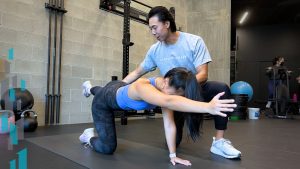Beat Low Back Pain and Improve Performance With Lift Clinic's Vancouver Physiotherapy, Chiropractic, and RMT Massage Therapy Team.
When it comes to the low back, what do we mean by rehabilitation and performance? After all, we decided to call ourselves Lift Rehabilitation and Performance Clinic. Here are a couple scenarios to give an idea:
Scenario 1:
Ronnie was struggling with low back stiffness off and on for some time. One day, during a routine strength exercise, an episode of higher than usual pain set in. Everything from getting dressed and walking, to sleep and sitting for long periods became a task.
Ronnie wisely decided to give Lift Clinic a try and booked an appointment online. In their first appointment, a rapid head-to-toe assessment gave focus to local pain and root-cause limitations.
Now Ronnie has a plan to address both the symptoms and cause of the pain. After a few sessions, Ronnie is feeling better, moving better, and back to activities they love.
Fast forward 2 months and Ronnie moved from a rehabilitation to a performance and prevention mindset.
As a result of his treatment, mobility and strength improvements allowed Ronnie to achieve a personal best that was 25% higher than previous lifts!
Scenario 2:
When it comes to running, jumping, training, and play, Pat values ability and longevity.
Pat came to Lift Clinic without pain, but wanting to assess and better understand their body and how to direct their efforts at stretching and exercise most efficiently.
Pat thinks of this like having a coach in sports – where would someone like Roger Federer be if they had relied on teaching themself to learn the game?
Pat’s first session with Lift Clinic started with a detailed head to toe assessment. This unveiled the root cause of several important mobility and stability/strength issues.
With this new information, Pat’s exercise routines changed into a focused a pathway to better movement and longevity. Doing cool stuff, like running, jumping and playing became more fun.
Physiotherapist Travis Dodds explains what it's like to work with a clinician at Lift Clinic to achieve your low back goals.
What's It Like to Rehabilitate Your Low Back Pain and Injuries at Lift Clinic?
At lift clinic we strive to provide a thorough assessment that incorporates an understanding of your head to toe movement abilities and how these relate to your pain and injury. We believe in helping clients level up movement by addressing root causes of pain. As a team we train together to help ensure our clinicians know the abilities of their teammates. This is so we can make accurate “passes” when sharing clients, like how elite sports team make passes as they work towards scoring a goal. We work towards understanding the rules of the game (the body and how it responds to treatment), our unique skills and abilities (who to pass to and when), and ensure the right people are involved (including you, the client because you’re on the team now, too!).
We encourage clients to think big picture and help us understand who you are and what’s most important to you. So we like to start by asking questions like this:
What would you be doing right now if your health and function were 100%?
Without knowing it, many people start to accept low back pain as a natural part of aging, or something they can’t solve.
Stop for a moment and ask – have you begun to accept a lower level of function? Have you had to say no to friends, family or your own usual activities or bucket-list, due to pain or a sense of vulnerability?
Life is short. Let’s get you back to 100%, ASAP.
What would you be doing right now if you were at 100% physically and mentally? Training for sport? Climbing a mountain? Or building a body to deliver function and longevity to run, jump, train, play and lift until you’re 100 years old?
Be clear with yourself and your clinician about what matters most.
Note - what if 'Being 100%' isn't what it used to be?
Yes, there are cases where pain or physical limitations may be present for the long term. We’d recommend to never make this assumption until you’ve first tried several approaches or even several clinicians and treatment disciplines. After thorough diagnosis and interdisciplinary agreement, the conclusion may be that pain or physical limitations will be present long-term.
However, not all hope is lost! In this case, you can shift your focus to optimizing function and pain management. For example, working towards a high level of function even with some pain, or aiming to understand and achieve your maximum function within a new reality (such as following a more significant injury, loss of limb or traumatic brain injury). At this point, improving your mental toughness becomes just as important.
Why is it important to seek treatment for your low back pain sooner rather than later?
Listening to this message and addressing it early on is key to being in tune with your body and achieving higher levels of function and longevity. In other words, address the symptoms while also figuring out why they’re happening! The aim is to identify the cause as soon as possible. Based on these findings, we create an individualized treatment plan to speed recovery and help you move better, sooner.
Chiropractic, massage therapy, physiotherapy, or a combination of the three can serve to identify and treat these underlying issues. Early intervention is key – there’s no point waiting to see if it goes away. Instead, listen to this signal from your body, this cry for help. Go and find the root cause, fix it, and get back to living your best life.
Those with low back pain can struggle with:
- bending/picking things up
- standing/walking for long periods of time
- sport performance
- sexual activity
- sitting comfortably
- moving around in bed
- sleeping
- reduced leg strength and balance
- lifting and carrying
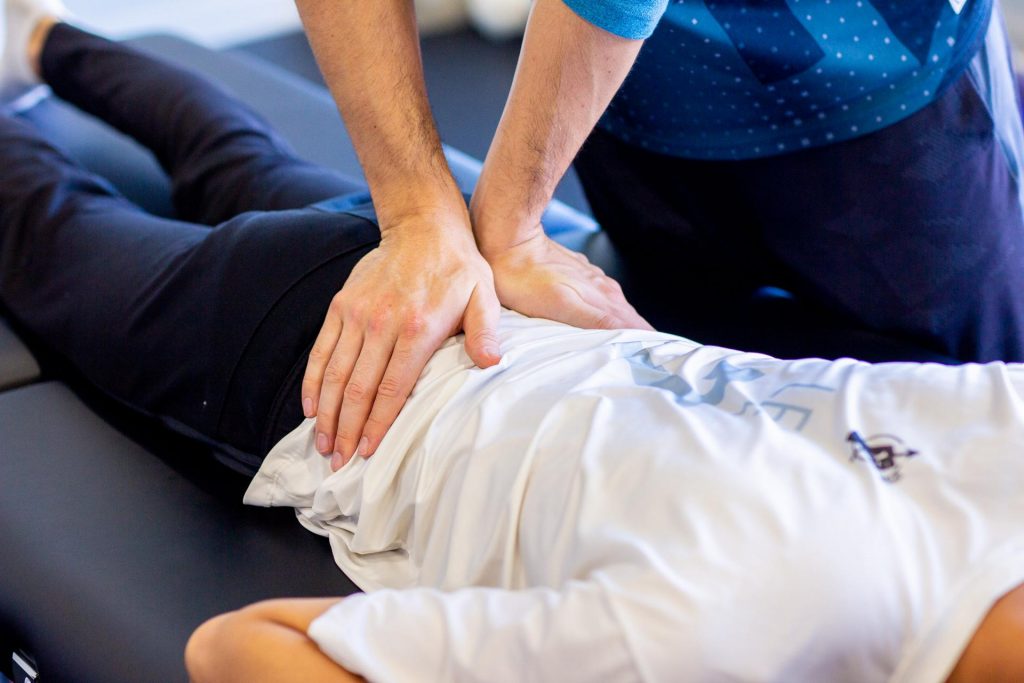
How to prepare for your first appointment at Lift Clinic:
- As we've already hinted, come prepared to tell us why this is important and what you'd be doing if you were 100%.
- Dress in comfortable clothing, that will allow us to easily see your whole back and how adjacent parts work together! Shorts are ideal and a tank/sports bra that allows us to see as much of the spine as possible is great for female clients.
- Want to help improve your ability to communicate and measure your low back pain? Here's a link to some common low back functional screening resources. Consider printing one off and bringing it with you to help communicate with your therapist, or measure progress over time.
Take the first step to eliminating your low back pain.
Let's talk about the whole person too - how is low back pain affecting your mental health?
Low back pain can be associated with mental health struggles. This can be a chicken and egg situation. How is low back pain affecting your mental health, and vice-versa? Are you feeling more anxious due to low back pain? Is it a source of stress? Is it stopping you from being getting active, and doing things you love?
You can talk to your therapist about whether mental health may be affecting, or affected by your pain. Lift Clinic is an environment free of stigma. It’s our job to understand your pain and help you to address it in the most efficient manner. We may be able to share tips or ideas about small steps other clients have taken to help, in a similar situation, or point you in the direction of people or resources to help.
Low Back Pain/Rehabilitation FAQs
We treat all injuries and pains. A handful of the most common are:
- Sciatica
- Disc Herniations/Disc Bulges
- Low Back Sprains and Strains
- Chronic Low Back Pain
- Acute Low Back Spasms
At Lift Clinic you could see one or all three, but usually in the case of low back pain people start with physiotherapy or chiropractic. Each discipline has its unique fundamental training background. We also train to work together as a team so we can comfortably refer to a trusted colleague, share notes and deliver a broader range of skills to maximize benefit to the client.
Yes, IMS Dry Needling helps to release/reset tension in grumpy back muscles. For example, this can take pressure off of a sore/inflamed joint, or alleviate pressure on a nerve that may be causing sciatica (leg pain) in the case of an intense low back spasm or disc herniation.
Yes, manipulation can help Low Back Pain. This can be done by a chiropractor and some physiotherapists as well. Notably, manipulations aren’t always directed right at the site of pain. In the case of the low back, we may be looking to take pressure off the low back by treating above (the thoracic/mid-back region) or below (the pelvis and hip).
A registered massage therapist will use a range of techniques to decrease pressure on the areas causing your pain and help to improve overall movement in patterns such as forward-bending, back-bending and rotation. Sometimes gentle work in the painful area is really helpful, other times, deeper work in adjacent, non-painful areas takes a lot of pressure off the sore spots!
Yes. In most cases, it’s just a matter of finding the positions your body likes right now to relieve symptoms, or positions that you can tolerate which will alleviate pressure on the low back! Years ago, bed-rest would often be prescribed for back pain but research suggests being as active as possible within your tolerance is best. Where severe pain prohibits activity, sometimes we need to collaborate with medical or other forms of intervention to help address pain.
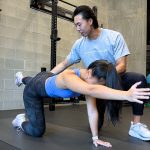
Meet Cameron Fay: The latest addition to our Vancouver physiotherapy team
Meet Cameron Fay, a Vancouver Physiotherapist with a rich history in sport and rehab, who is ready to help you reach your goals.
How Does Optimal Low Back Health Help You To Achieve Your Performance Goals?
At Lift Clinic we use the hashtag #runjumptrainplaylift to help keep us all in the mindset of fundamental movements that help us feel alive and live our best life. Before we try to answer the question of how the low back affects performance, lets take a moment to talk about what we mean when we say “performance?”
It depends on who you are, what are your goals (what would you be doing if you were 100% – dream big!), and perhaps the stage of your life (age, and what’s going on around you). It’s ok to change your definition of performance at different times in your life – in fact, it’s likely to evolve every year, sometimes faster and sometimes over longer cycles like 3-5 years.
But at every age and stage, we’d like to see you enjoying movement and having the chance to reach or even exceed your expectations about what is possible.
So let’s take a closer look at how the low back
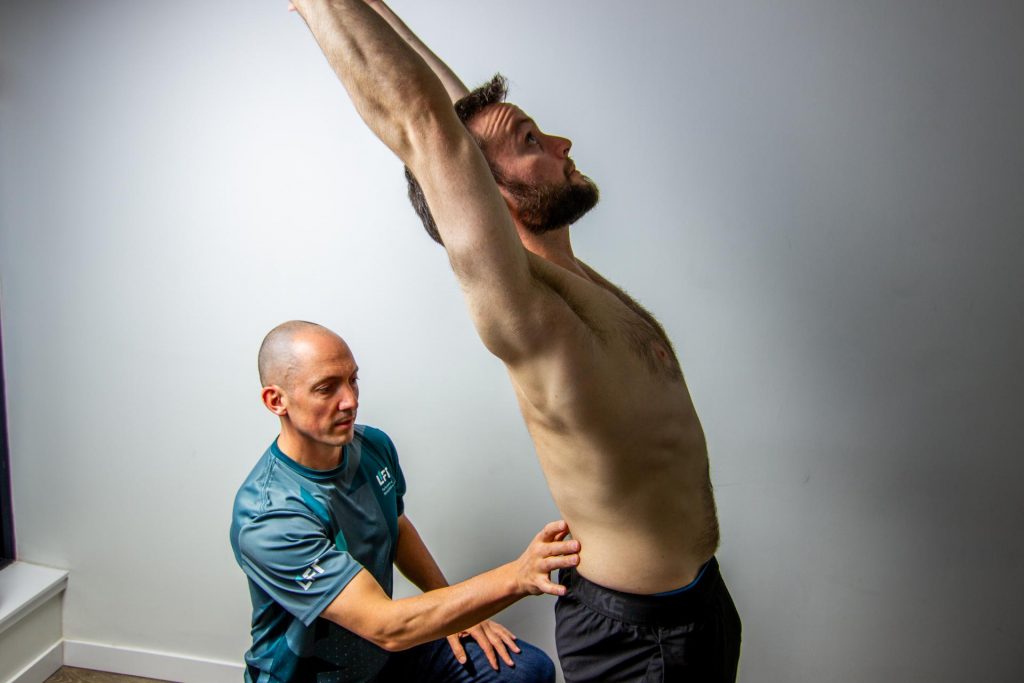
Optimal alignment and mobility of the low back is crucial to optimal core performance. The core is like a cylinder wrapping around your abdomen and coupling your pelvis to your ribcage, but also includes your diaphragm and pelvic floor.
When your core works at its best, it does 2 main things:
- creates stability to make the joints happy and healthy, where your nerves emerge from the low back. This happy environment allows your nervous system to provide optimal control of the muscles of your legs, which helps your running.
- the stability and coordination of motion from the core to pelvis allows a stable platform for your glutes to push off of. This particular area is critical to power generation in your running stride, whether you’re sprinting across the street or running a marathon.
The answer here is almost the same as in running. (see above).
However, jumping is generally an extremely high force movement. The demands for stability in the core are even higher.
If your goal is to jump higher, or to optimize longevity so you can enjoy being able to jump well for a lifetime, aiming to optimize function of your low back and core is critical.
At Lift Clinic, jumping is near and dear to our hearts as many of us come from backgrounds involving jumping in sport, personally and professionally (as clinicians).
If you want to jump higher, you’ve come to the right place.
Training has to do with consistency. The goal is to be consistent in your habits, consistent in your routines so that you can expose your body to movements and challenges to develop flexibility, strength and performance suited to your goals.
Having consistent high function in the low back equates to having consistent strength and power output, and movement control for your legs.
This can be the difference between a daily grind, and a daily joyous expression of movement.
If you love your training, its easier to be consistent.
It depends on what you’re playing!
If you’re an athlete, ask us how it can help you in your sport.
If you’re an adult, ask us how it can help you between the sheets (sleeping or otherwise).
If you’re a grandparent, it can help keep you strong, mobile and able to say “yes” when friends and grandkids ask you to play with them!
How can Lift Clinic help you optimize your low back performance and achieve your goals?
It starts with assessment. Come in and tell us what you want to achieve. We’ll assess your movement and tell you if there is anything that needs to be worked on to optimize your movement, strength and skill performance.
If you’re keen on taking your assessment beyond movement, into strength and athletic performance (insert goal = be a functional office worker, olympic athlete or functional grandparent), this takes us into a grey area where we can also help to find you a strength coach with aptitude to guide you through a process that will meet your goals.
We collaborate extensively with strength coaches in the community and have active relationships with them as well as an understanding of what can be done effectively and efficiently from home or more independent settings.
